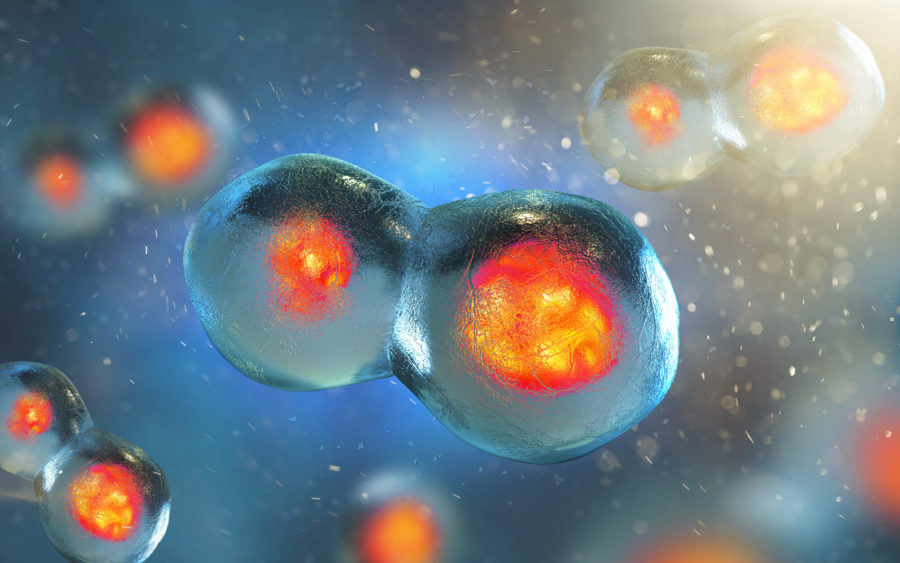
A research team has recently taken normal skin cells and transformed them into three types of stem cells that are found in early-stage embryos. Conducted using mouse cells, the work has great potential in both modelling embryonic diseases and potentially generating whole embryos from skin cells. The study was recently published in Cell Stem Cell and was conducted by researchers at the Hebrew University of Jerusalem.
Led by Dr. Yossi Buganim, an HU researcher in the Department of Developmental Biology and Cancer Research, the team utilized certain genes that could transform mouse skin cells into stem cells of the embryo, placenta, and extra-embryonic tissues such as the umbilical cord. By creating all of the stem cells that comprise the early embryo, the technique has great potential in modelling birth defects occurring in the early embryonic stages. If successfully applied to human skin cells, this approach could yield human embryos with no need for egg and sperm cells as well, providing a solution to infertility problems.
Buganim and his team identified a novel combination of five genes that reprogrammed skin cells to transform into the three types of embryonic stem cells upon insertion. This work relates back to studies conducted in 2006, when Japanese researchers reprogrammed skin cells into early embryonic cells using four central genes. These cells, known as induced pluripotent stem cells (iPSCs), are identical to their naturally occurring counterparts developed early in embryonic development. Though these cells can differentiate into any fetal cell type, they are incapable of forming extra-embryonic tissues like the placenta.
READ MORE: First Child is Born After Robot-Assisted Uterine Transplant
This is where Buganim and colleagues work picks up the slack, with somatic skin cells being transformed into iPSCs that formed fetal, placental, and other extra-embryonic tissue stem cells. This HU team identified gene sequences that are essential to both the terminal stem cell fate and tissue development. They revealed the mechanisms activated during the formation of these cells by analyzing changes in the genomes of cells once the five genes were introduced. For example, they made use of the “Eomes” gene to morph cells into placental stem cells and identified “Esrrb” to drive cells to acquire extra-embryonic traits. They found that in the first stage of differentiation, the skin cells lost their original structure and slowly transformed to the iPSCs of interest. This process was tethered to two of the five essential genes used.
Other research regarding embryo generation in the absence of sex cells has been attempted in mouse models, typically using three early cell types isolated directly from a developing embryo. Though this approach holds potential, there are strong ethical issues tied to the termination of a live embryo. Buganim’s approach, on the other hand, simply transforms skin cells into these stem cells of interest without harming the donor.
Buganim’s team in this research included Oren Ram from the HU Institute of Life Sciences and Professor Tommy Kaplan of the HU School of Computer Science and Engineering, as well as Hani Benchetrit and Mohammad Jaber, two doctoral students.
Groundbreaking technique could provide a path toward creating whole human embryos from human skin cells, without the need for sperm or eggs.https://t.co/vmPINa8CNg
— ISRAEL21C (@ISRAEL21C) May 7, 2019
Source: ScienceDaily







 © 2025 Mashup Media, LLC, a Formedics Property. All Rights Reserved.
© 2025 Mashup Media, LLC, a Formedics Property. All Rights Reserved.